Embroidery Terms and Definitions (FREE Printable Glossary!)
This post may contain affiliate links, which means I’ll receive a commission if you purchase through my links, at no extra cost to you. I sometimes receive free products for review. Please read disclosure for more information.
If you’re new to machine embroidery and feel overwhelmed with the jargon, you’re not alone! The terms embroiderers use are unique and sometimes just plain odd.
To help you navigate learning the terminology of machine embroidery, I’ve put together this list of embroidery terms and definitions.
And, at the end of the post, you can download a free alphabetized printable to keep next to your machine!
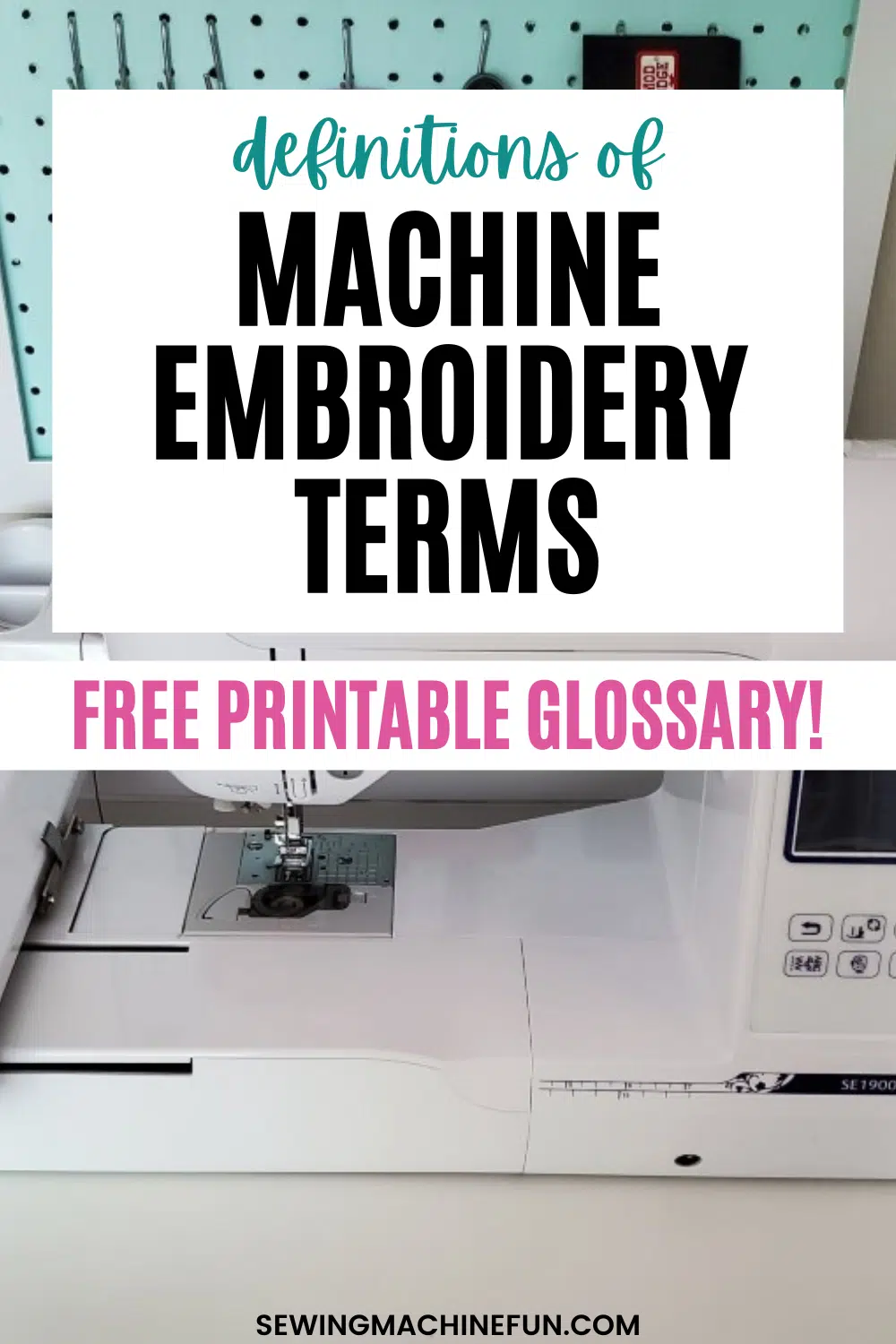
Machine Embroidery Terms Glossary
Since there are many words associated with embroidery, I am loosely grouping the embroidery terms by themes for better understanding.
Some definitions may use words you will come to later in the post, so don’t fret!
And, for some of the definitions, I’ve also included links to tutorials and resources with additional, more in-depth information if you’re still confused.
Embroidery Definitions and Terms (Supplies and Materials)
Stabilizer

The backing that goes behind or underneath an item to be embroidered to provide stability and support stitch integrity. (Grab my free embroidery stabilizer printable for more details!)
There are many stabilizers, and each comes in different weights (thicknesses.)
1. Cut-away stabilizer: The most stable, this paper-like stabilizer permanently provides support for dense designs and stretchy, unstable embroidery blanks.
2. Tear-away stabilizer: More unstable than cut-away stabilizer, tear-away stabilizer supports non-stretchy, stable blanks and designs with a low stitch count. It is torn off after stitching.
3. Wash-away stabilizer: A stabilizer or a topping that is washed away with water after embroidering. Wash-away (or water-soluble) stabilizer can also be dissolved in water; that solution can then be used to stiffen fabric.
4. Heat-away stabilizer: Most often used as a topper and removed with an iron.
5. No-show mesh stabilizer: A type of cut-away stabilizer that is softer and decreases stabilizer show-through on light-colored embroidered items. Also known as PolyMesh.
6. Adhesive stabilizer: Also known as sticky self-adhesive stabilizer or even adhesive-backed stabilizer, this is a piece of stabilizer (most commonly tear-away or wash-away) with a layer of adhesive on the top. Simply peel off the sticker top to reveal the sticky part.
7. Fusible stabilizer: Temporarily fused by an iron to embroidery blanks to help hooping and stabilization. It can be cut-away or tear-away.
Topping
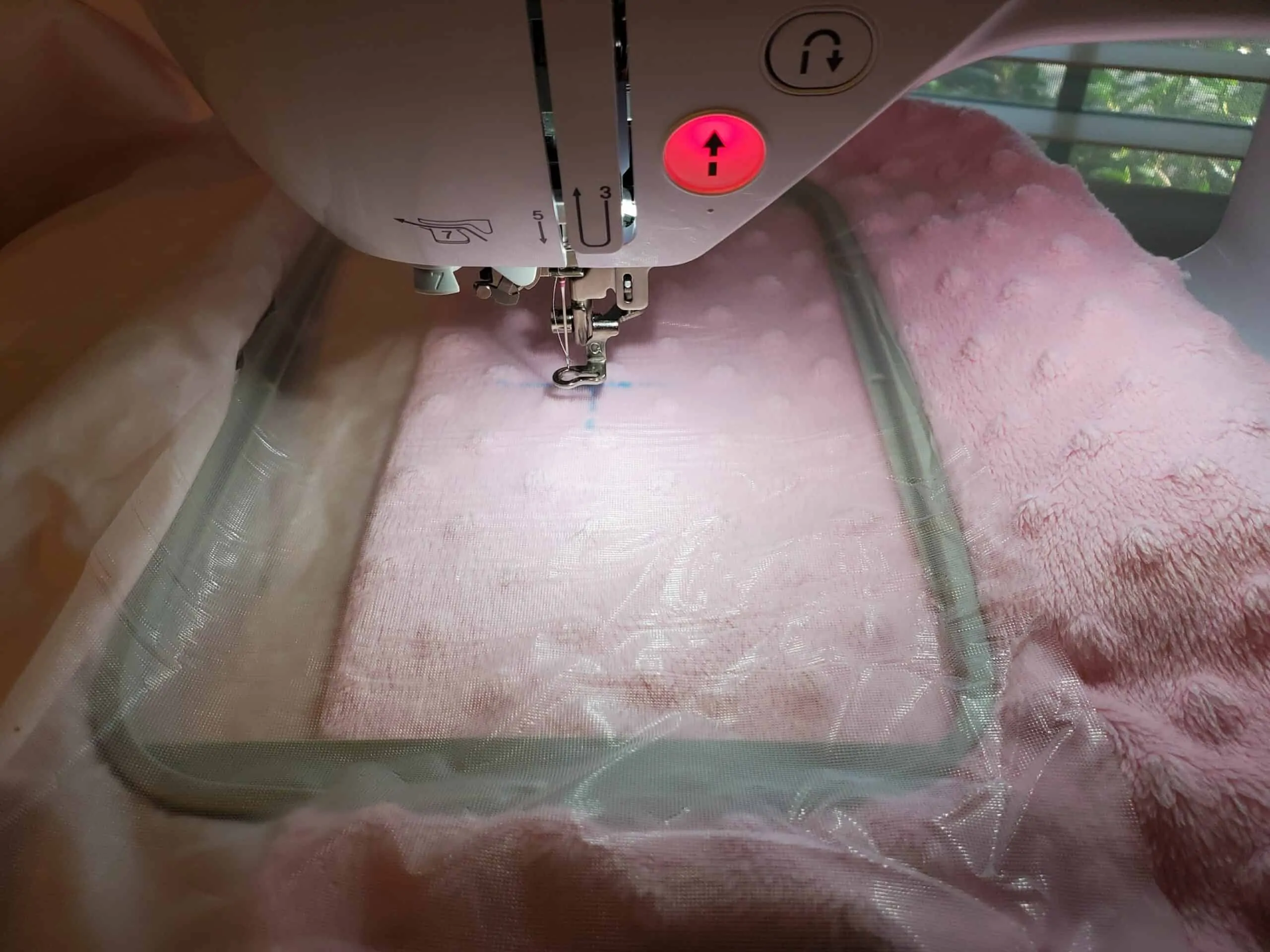
Usually water-soluble (but can be heat-soluble) and goes on top of embroidery blanks with nap or pile to prevent stitches from sinking.
Blanks
An embroidery blank is any item you intend to embroider on. This includes anything from quilting fabric to shirts to cardstock cards. (Here are some great places to buy wholesale embroidery blanks and 200+ things you can embroider on.)
Spray Adhesive

Used to temporarily adhere fabric and stabilizer together during the embroidery process. I love using Odif 505 when floating fabric.
Embroidery Scissors
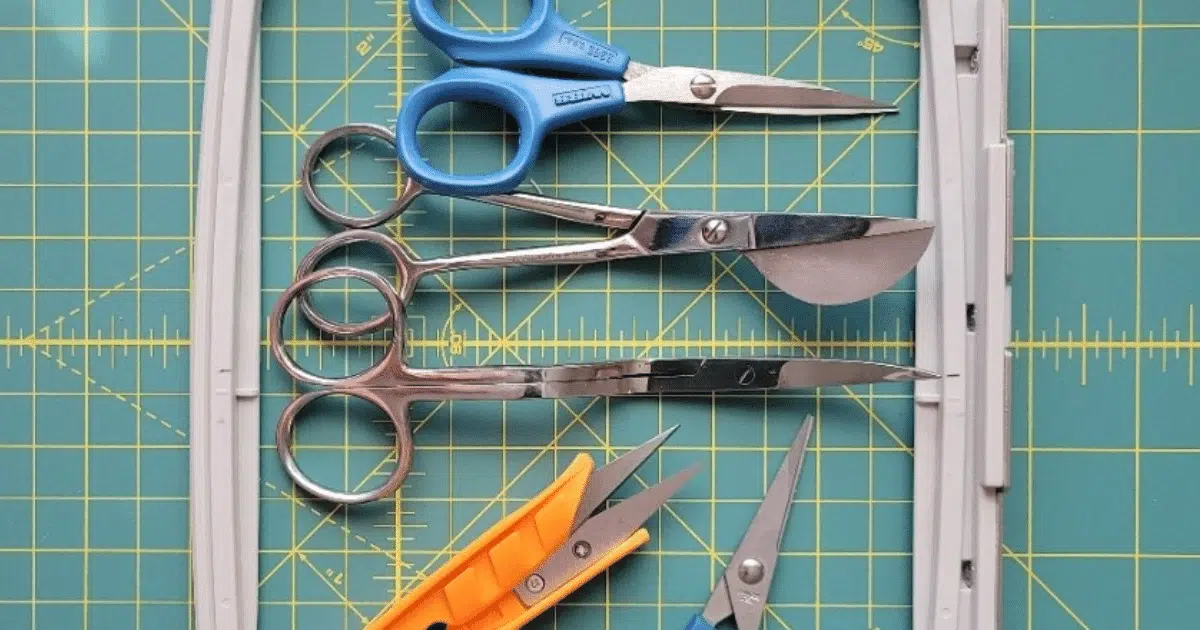
Specialized small, sharp scissors are used to clip applique, jump threads, and more. There are many types of embroidery scissors.
1. Curved Embroidery Scissors: These have a slight curve at the tip, making them better for clipping applique fabrics while still in the hoop.
2. Double-Curved Embroidery Scissors: In addition to a curve at the tip, the handle has a curve so you can easily clip jump stitches when the hoop is still in the machine.
3. Duckbill Applique Scissors: One side is long and sharp, while the other has a pelican or duckbill shape. These are used to clip away stabilizer or applique fabric. When placing the duckbill portion against the base fabric, the likelihood of snipping that fabric is decreased.
Machine Embroidery Thread

Different from sewing thread, machine embroidery thread is made in more luxurious colors and can withstand friction better than sewing thread.
It comes in different weights and materials. (Here’s my guide to the best embroidery threads.)
Thread Stand
Holds multiple threads and provides better feeding. Thread stands also hold thread cones or spools too large to fit on the machine.
Thread Net

Placed around threads to help them feed more evenly through the machine. Especially useful for metallic and other slippery threads.
Embroidery Needles
Specialized needles with an elongated eye and widened groove to decrease friction between the thread and eye of the needle. (There are many parameters to consider when selecting the best embroidery needle.)
Embroidery Hoop or Frame

The plastic or metal object that holds the embroidery blank and stabilizer taut between its two layers. It attaches the machine’s embroidery arm.
Hoop Size
The size of the hoop is a rough estimate of the embroidery field or embroidery area, which correlates with the biggest design you can stitch at one time. (Check out hoop size explained in detail!)
Hooping Aid
An item used to make machine embroidery hooping much simpler, especially for two-layered items like shirts and onesies.
Hat Hoop (Cap Frame)
A special hoop used when embroidering hats and caps. Multi-needle embroidery machines with free arms use rounded cap frames, whereas single-needle, flatbed machines have flat hoops to help flatten the cap in a single layer.
Embroidery Foot
The metal presser foot used during machine embroidery. It has a large hole in the center where the needle and thread pass through.
Bobbin
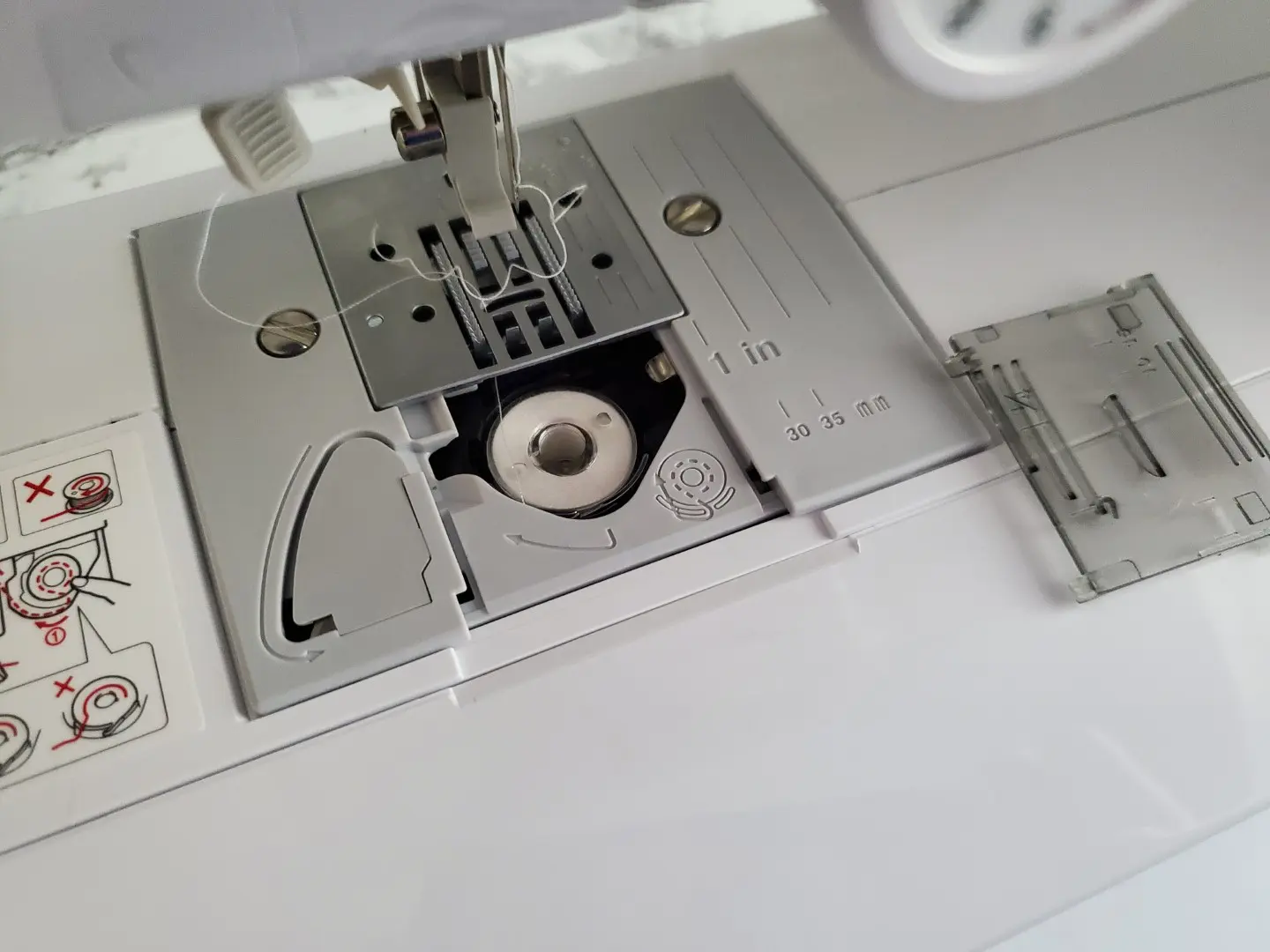
A plastic or metal ring that holds the bottom thread, which forms the underside of an embroidery design. Bobbins fit in the small bobbin case at the base of home embroidery machines.
Prewound Bobbins
Bobbins in your machine’s size that are factory wound with white, black, or colored embroidery bobbin thread. These save tremendous time!
Backing
Stabilizer placed on the back of fabric before embroidering or on the back of applique fabric.
This can also refer to a layer of soft iron-on fabric that covers rough embroidery stitches on the back of shirts, onesies, and other items to be worn against the body.
Interfacing
An extra layer of woven or non-woven material permanently fused to the back of a blank to increase the stability of unstable fabrics or minimize stabilizer show-through on light-colored fabrics.
Templates
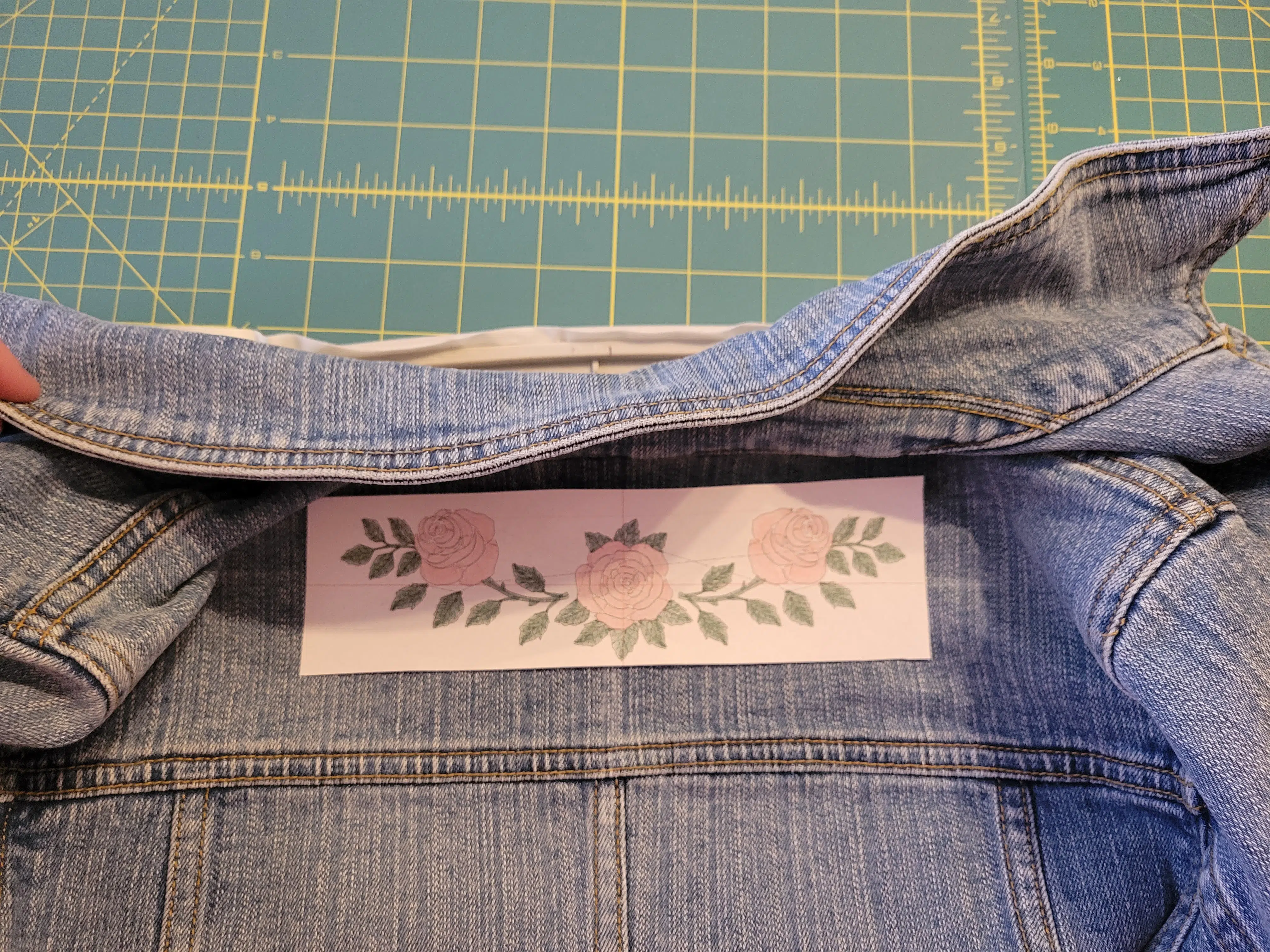
A print-out of the embroidery design that can be used for placement.
Or, the plastic template, which goes over your hoop to denote the embroidery field.
Single-Needle Embroidery Machine
Embroidery machine with one needle, so threads must be changed manually at design color changes.
Multi-Needle Embroidery Machine
A more professional, commercial embroidery machine with more than one needle. This type of machine automatically changes colors with no user input or need to stop the machine.
Embroidery Glossary: The Process Itself
Marking
Using a tool like a water-soluble pen, chalk wheel, or placement sticker to denote the center of where an embroidery design should be stitched.
Hooping
Securing stabilizer and fabric within the hoop of the embroidery machine tautly. Not all embroidered items can be hooped. (Read: how to hoop fabric!)
Floating

Technically, placing a piece of unattached stabilizer in the embroidery area.
However, this term now generally refers to hoopless embroidery, which means using only stabilizer in the hoop and attaching the item to be embroidered outside the hoop. (There are many ways to attach floated embroidered items.)
Stitch Out
A sample or trial run of the embroidery design to check settings. This is a great idea when you first start creating your own embroidery designs.
Jump Stitches

When a machine jumps from one part of a design to another, the thread between the two locations is called a jump stitch. Some machines automatically cut jump stitches.
Basting

Attaching an embroidered item to stabilizer by hand or machine using long length stitches to keep blanks from shifting during stitching. (Learn how to make a basting box.)
Stitching Speed
How fast the embroidery machine stitches. The unit of measurement is spm, or stitches per minute.
Embroidery Terminology for Stitches and Projects
Fill Stitches

The most common type of embroidery stitch, fill stitches are closely-placed stitches that cover an entire design area. Changing properties of the fill stitches can provide dimension and texture to an embroidery design.
Satin Stitch (Column Stitch)
A short-length zigzag stitch that creates a column. Commonly used as a border in applique embroidery designs and in alphabets.
Running Stitch
A line of stitches used in underlay, redwork designs, free-motion quilting designs, placement stitches, and more.
Underlay
Stitched first in embroidery designs as a foundation and to attach the blank to the stabilizer. Also provides extra support to the area to be stitched.
Underlay stitches can be used as a knockdown, nap-tack, or Hatch smash stitch to flatten fluffy fabrics, keeping designs embroidered over the stitches from getting lost in the pile.
Applique
Using fabric instead of fill-stitches to create the colored area of a design with your embroidery machine.
While this can be done by hand or with a sewing machine, machine embroidery applique is faster and more precise. Learn the process of how to applique with an embroidery machine.
Dimensional Embroidery
Stitching designs on a thin fabric like organza, cutting the design from the fabric, and stitching it to another blank resulting in a 3D, raised appearance. Deborah Jones has a great book on Dimensional Machine Embroidery!
Free-Standing Lace (Lacework)
Stitching specialty digitized designs onto water-soluble stabilizer, which is removed after the embroidery process to leave a lace appearance.
In-the-Hoop (ITH) Designs

In-the-hoop designs are projects stitched entirely in the hoop. My favorite things to stitch in the hoop are key fobs, coasters, small wallets, and even stuffies.
Check out my favorite free ITH embroidery designs for inspiration!
Cross-Stitch Embroidery
An embroidery design mimicking hand cross-stitching that can be stitched on Aida cloth for added effect.
Puffy Foam
Puffy foam is placed underneath embroidery satin stitches to give a 3-D elevated appearance. Foam-raised embroidery is especially common on caps.
Words Associated with Embroidery Designs
Stitch Density
The distance between stitches in a digitized design. When changing density in software, increasing the stitch density makes the design less dense.
Stitch Count
The total number of stitches in an embroidery design. Larger designs have higher stitch counts and take longer to stitch out.
Also, the stitch count of a machine can refer to the total number of stitches your machine has made over its lifetime.
Embroidery Software
A computer program used to edit, customize, or digitize designs for machine embroidery. (Here are my favorite free embroidery software and the best digitizing software.)
Customization
Changing a design to meet your needs by adding lettering, changing thread colors, etc.
Editing
Using embroidery software to change stitch properties of a design.
Digitize
Creating an embroidery design by adding and placing stitches on an image. There are two main types:
- Auto digitizing: Using an embroidery program to place these stitches for you. Results vary depending on the complexity of the design.
- Manual digitizing: Creating the embroidery design by hand, placing the stitches yourself.
Scaling or Resizing
Changing design size, which only works in moderation.
Split a Design
Using software to break apart a large design into smaller pieces that can be stitched in multiple sessions by a smaller embroidery machine.
Design Transfer
Take designs from one source to another. Ex: from a computer to your embroidery machine via WiFi, a wired connection, or USB drive.
File Format
The three letters after the period in a saved embroidery design name designating whether a specific software or embroidery machine can read the file.
File Converter
Software that converts one type of embroidery file (ex: .pes, .jef) into another type of embroidery file (ex: .dst, .hus).
Embroidery Troubleshooting Terms
Puckering
Rather than lying flat, fabric wrinkles and is wavy at the borders of embroidery designs. Puckering is often caused by incorrect stabilization, movement during embroidery, or a poorly digitized design.
Bird’s Nest
A big ugly mess of bobbin threads below the hooped embroidery item caused by uneven tension, poor stabilization, improper hooping, or even incorrect threading.
Tension
The relationship between the pressure applied by the top and bottom threads. Balancing tension is essential for achieving perfect stitches. Tension may also need to be loosened when embroidering with metallic threads or doing bobbinwork.
Tension commonly refers to the tension on the top thread, while the term bobbin tension is the term for the bobbin thread’s tension.
Hoop Burn
Marks or a residual hoop shape left on the blank after it’s removed from the hoop. These often fade with washing or Magic Sizing spray.
Registration
How different parts of an embroidery design align when stitched. An example of poor registration is when the outline of a design is outside the fill-stitch inner portions of the design. (Here are tips to fix bad registration!)
Free Printable Glossary Download
Want to keep this list next to your computer? Here’s my Machine Embroidery Terms Glossary .pdf download. Please respect the time I put into this; it is for personal use only and not to be redistributed or sold. If you want to share, send fellow embroiderers to the link for this post to grab their own!
Conclusion
Any other embroidery terms you think I need to add or clarify? Let me know! I’ve been at this so long I forget the strange terminology I start tossing about when speaking in embroidery language.
Still confused with embroidery? Check out my helpful post on how to machine embroider!



I’m sorry but I don’t see the link to download the Terms and Definitions chart.
Just bolded the link for it toward the end of the post!